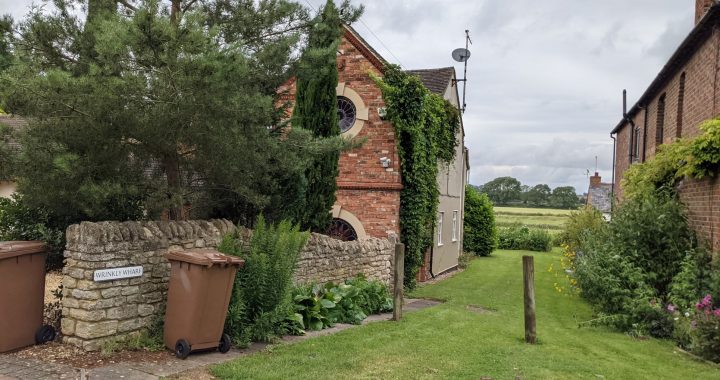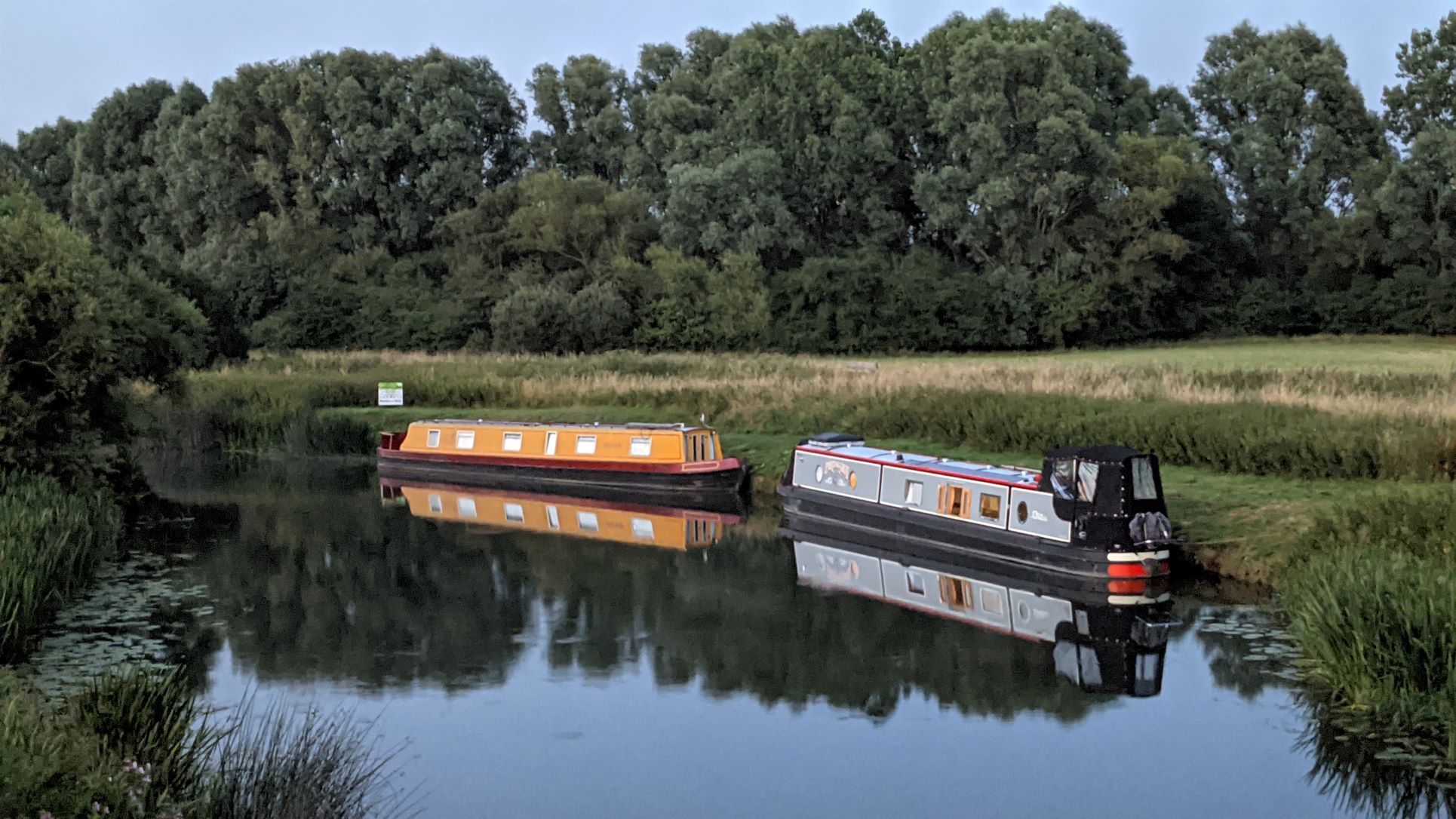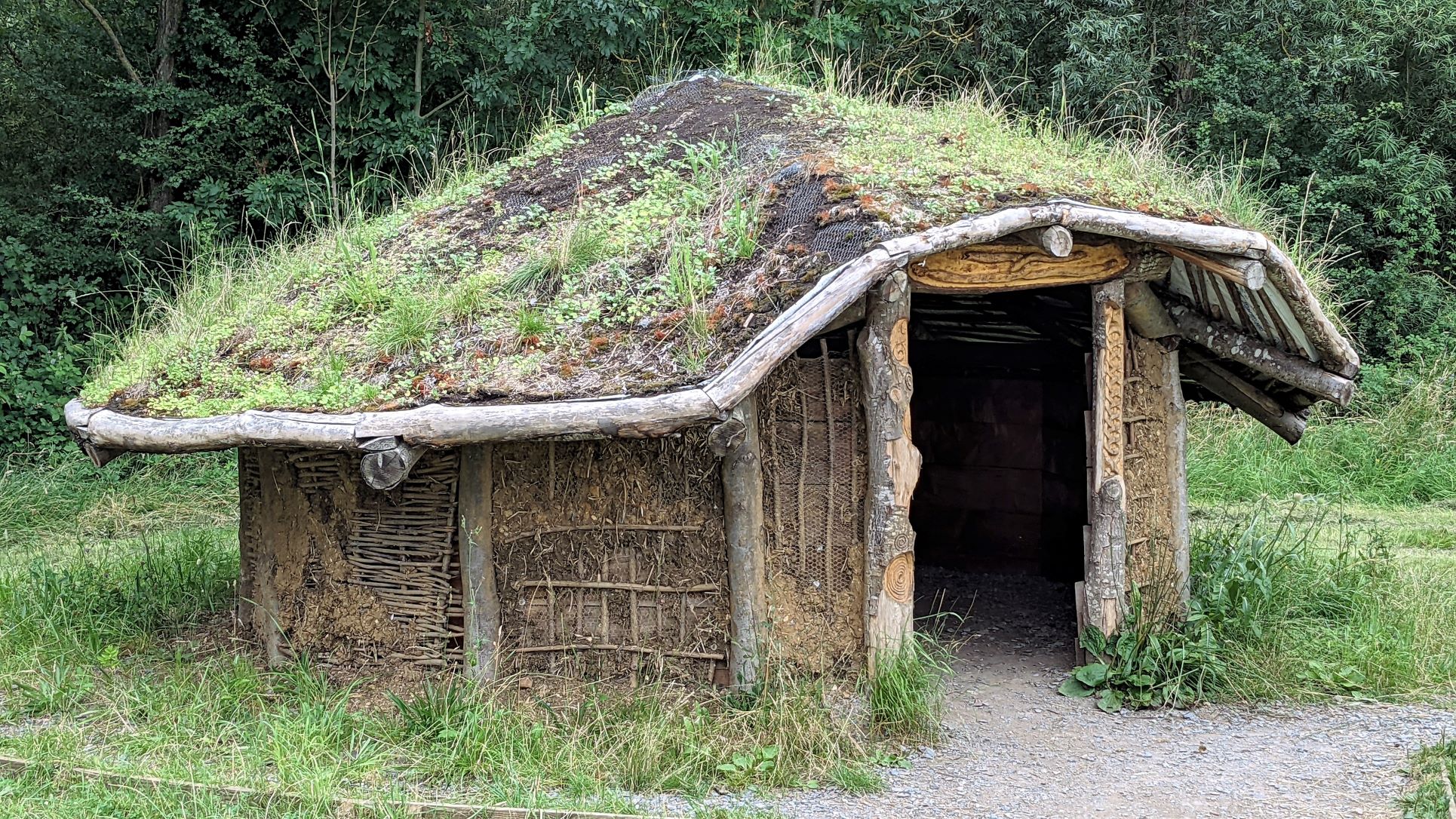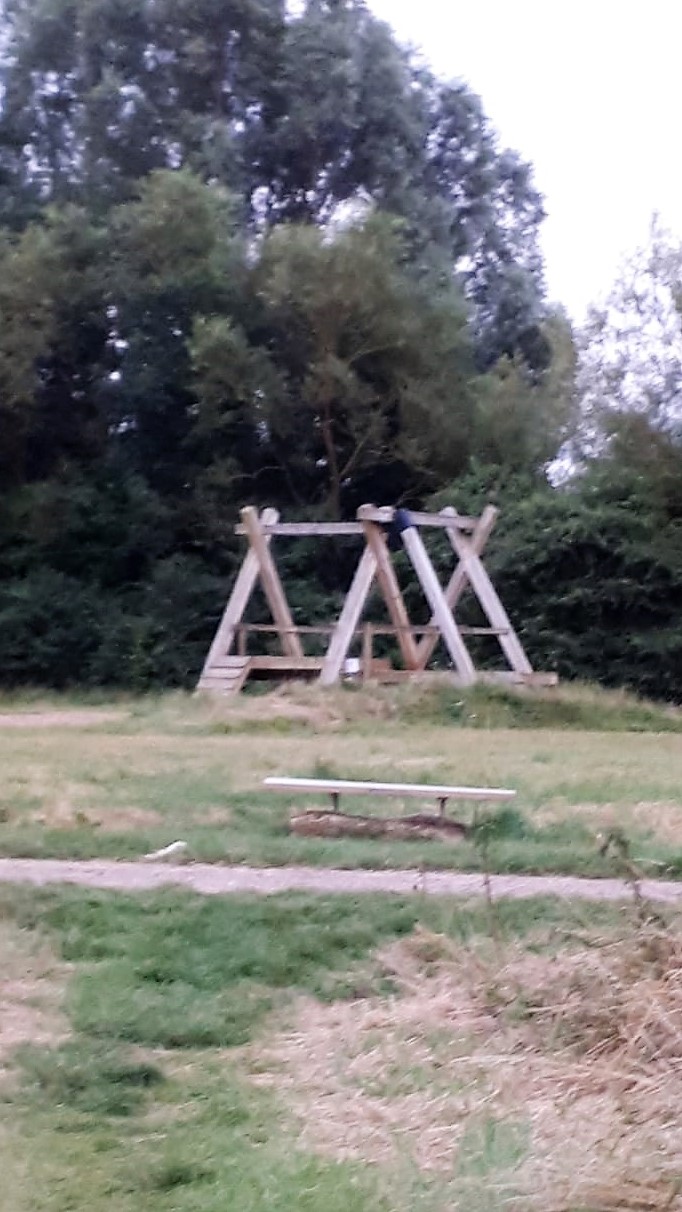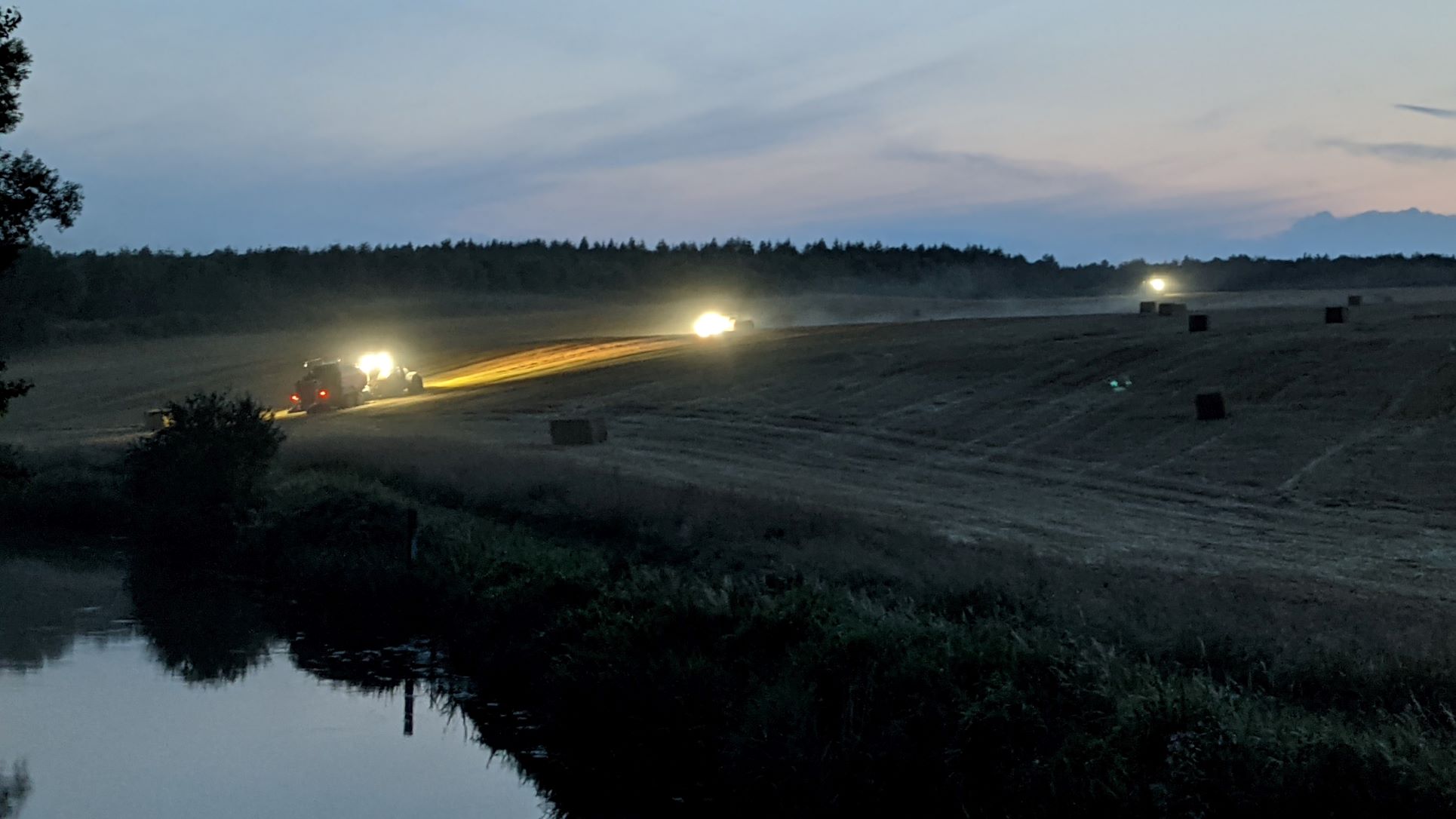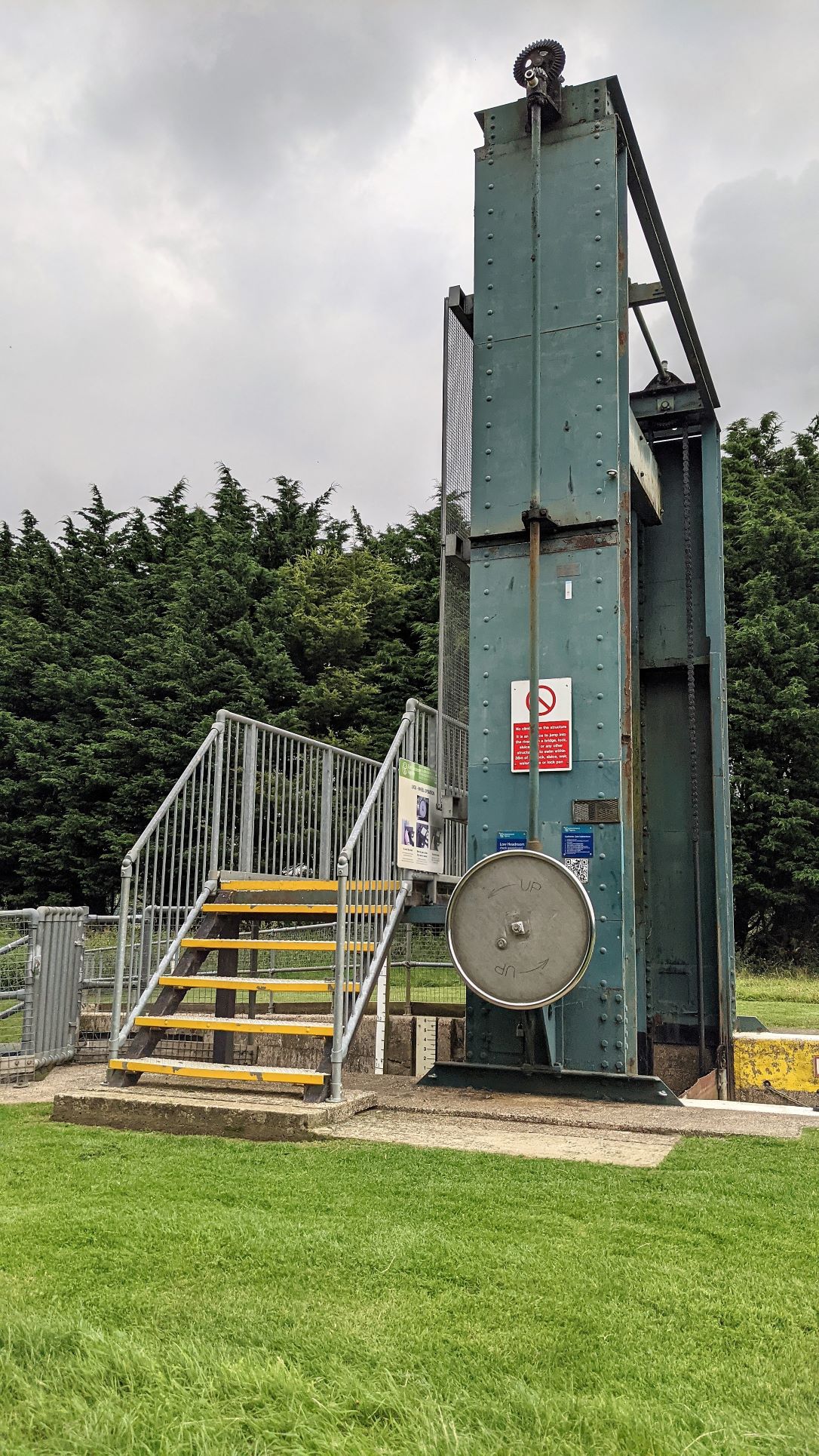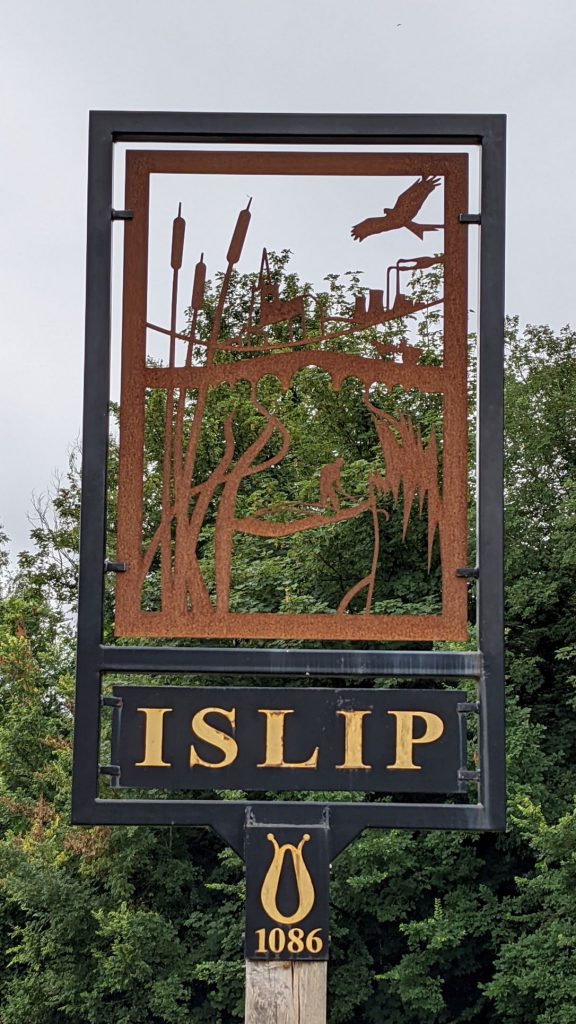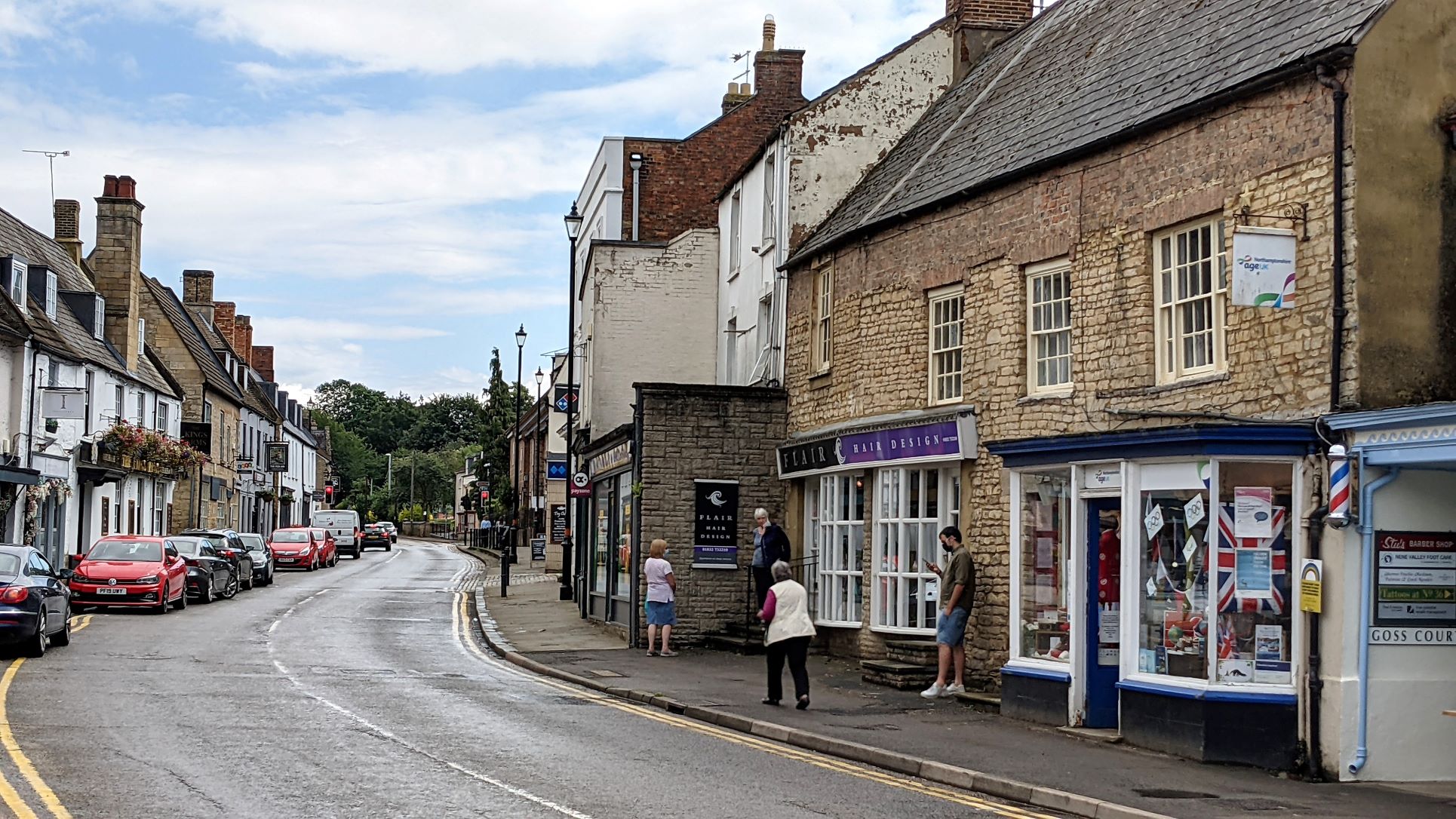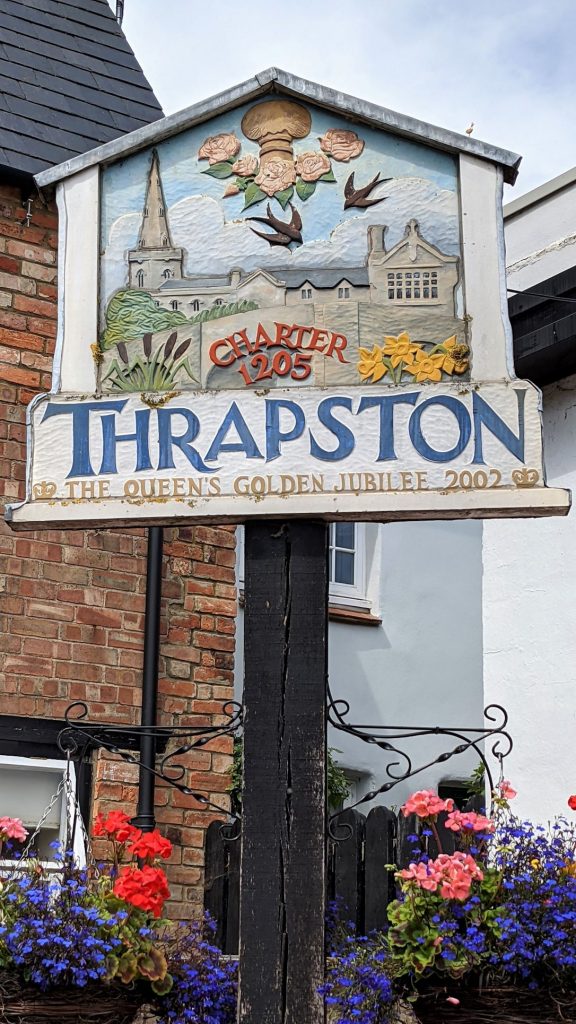A Change Of Perception
When focusing in on the details of a route, with all the issues of mooring and facilities, shopping and supplies at the front of your mind, the specifics of direction can get rather lost. While we were looking at our route ahead this week we took a wider view of the map and realised something fundamental. We had always believed that we were heading east from Northampton towards East Anglia and The Wash. When you actually step back you realise that the Nene is actually running consistently northeast through Wellingborough and Thrapston to Peterborough. In practice, it doesn't make any real difference but it does just shake up your world view a little.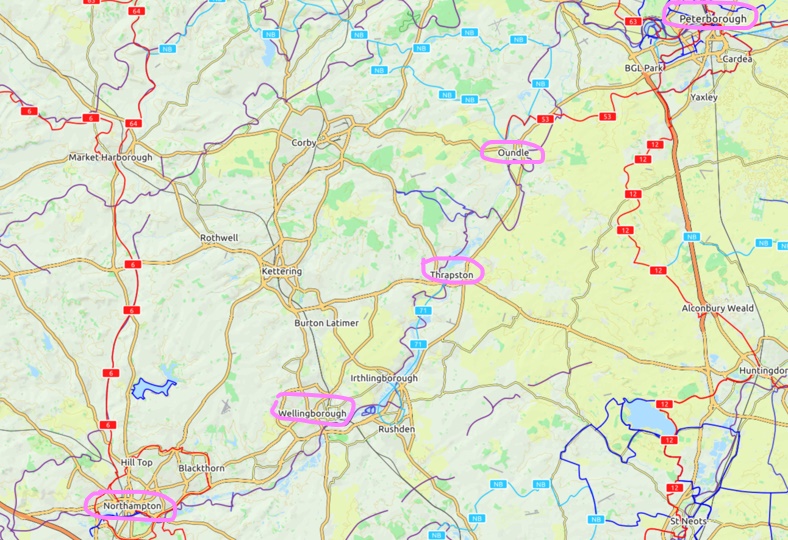
Stanwick Lakes
The Friends Of The River Nene mooring at Stanwick Lakes was lovely and we stayed there our full allotted forty eight hours. Very peaceful and remote in the evening, it was quite busy with passing walkers and families during the day.
The whole area has a long history but used to be meadowlands and then enclosed fields until quarrying for gravel started in 1985. That finished in 2004 and it is now a 750 acre country park run by a coalition of different trusts in partnership with the council. They have a Visitor Centre, café, cycle hire, kiddies playground, bird hides, cycleways, archaeological displays and more.
Throughout the area, walking round any corner, you come across another huge piece of timber play equipment, for older children and adults. They have really made a good job of it and it is all very well used. One of the main paths and a pair of giant zip wires were just beside the mooring but far enough back that we weren't ever disturbed by the people passing by. Of course, once the car park was closed and they had all gone home, we had to have a go on the zip wires ourselves!
Late in the afternoon "Hermod" arrived and moored up nearby. They were a fairly elderly couple being assisted by their daughter for a few days. As they were heading upstream they were now stuck, since they couldn't get any further without going through Irthlingborough Lock. Eventually, after some conversations with the EA they ended up leaving the boat on the "Friends" site and heading back home to Dover. They would come back and collect it once the lock had re-opened.
We had a nice, long walk around the country park and then left it and crossed the river further upstream, coming back down the other side and up to Little Addington and Great Addington before descending again to cross the river and back into Stanwick Lakes from the West. On the way, we passed the lock with its mechanism now dismantled and taped up. One boat, "Maisie", was just arriving at the bottom and we thought about going over and talking to them but they clearly already knew there was a problem. Telling them how we just squeaked through the day before could only rub salt into their wounds.
When we got back to the boat we found "Wild Lavender" moored underneath a footbridge just upstream from the mooring, presumably because there wasn't enough room for them there. We assumed they were also going to be baulked by the lock closure as they were now pointing that way.
After a fairly cloudy morning the weather had become increasingly hot and sunny. As the evening wore on we sat and watched the rather spooky sight of massive farm machinery working in the fields and gathering in the hay by floodlights, until well after ten o'clock.
Put Not Your Trust . . .
Finding that our faith in the continuing fine summer weather was naïve did not really come as a surprise. Events had already shown that any confidence in the Environment Authority having a superior ability to manage and maintain the navigations and facilities for which they are responsible, as compared with a charitable organisation, was sorely misplaced. Now we were also beginning to realise that the reliability of the guide books we had invested in for our journey was entirely questionable.
Over the sad, locked down spring we had acquired a set of three Imray Guides, endorsed by the Inland Waterways Association, that covered the River Nene, The Fenland Waterways and The River Great Ouse respectively. These appeared to be the the most comprehensive available 'bibles' for the areas we were about to explore. We had been pleased to note that they had all been corrected and reissued between April 2020 and April 2021, inspiring confidence that their content would be accurate and up to date for us to follow. Sadly, as the days had progressed, following plans already made and looking ahead to make new ones, cracks began to appear. We started to identify strange inconsistencies between the detail on the maps and the descriptions in the text, Worse still the reality on the ground was sometimes consistent with neither.
The next day started overcast with regular light spitting and one or two heavier showers. It wasn't enough to stop us moving and time was up, in any case, so we set out as we had planned. From Stanwick Lakes it was a mile and a half to the Upper Ringstead Lock. This one was designed and operated very similarly to the other locks we had passed through already, with one important difference - the guillotine gate was not driven by an electric motor. Instead, a large flywheel was attached to the gearbox which had to be turned by hand. It moved reasonably easily but took many, many revolutions to fully open or close the gate.
The difference is shown in the guides and there are six of these manual locks so a good chance for some arm and shoulder exercise.
Between the Upper and Lower Ringstead locks we hit the next inaccuracy in the guide book. We had a choice of two marinas identified in the guide as offering a full range of services, except for diesel fuel. Blackthorn Lake Marina was described as having a very tight entrance that is hard to spot when travelling downstream, as we were. Therefore, we pinned our hopes on Willy Watt Marina, a short way beyond and with the entrance facing upstream and to the left of the lock approach.
We nosed our way under the substantial old railway bridge spanning the entrance and into the narrow channel between boats moored on either side, which all looked pretty permanent. We had gone a few hundred yards, moving very slowly, when a lady on one of the moored boats asked us what we were after. When we explained she told us that there really wasn't any service marina down here at all and nowhere wide enough for us to turn round at the end. While that was frustrating to hear it wasn't the problem it could have been. She was very nice, as was the guy on the boat moored in front of her. When they understood what we were looking for they let us use their hose, showed us where their sanitary station was and helped us get ashore to use it. They clearly had nothing else in particular to do and we were offering some entertainment, especially when it started raining, so they seemed to regard it as a fair trade. Having concluded our business we waved goodbye and reversed gingerly back the way we had come and through the bridge to continue on down through Lower Ringstead Lock.
A couple more of those manual locks later we were approaching Thrapston Bridge. We thought we might moor on a forty eight hour pontoon just before the bridge that was described as being very awkward to get to, requiring a tight turn back on yourself and very close to the low Nine Arches Bridge. As we approached we found ourselves being surrounded by canoes. This made it difficult and embarrassing to do any tricky manoeuvring and as several only had young kids in, it also felt quite dangerous for them. We did make one failed attempt, then we couldn't take it any more and decided to just move on. There was a "Friends" site just beyond the bridge and we nearly opted for that. Just in time we realised that it was completely isolated, with no way to get onshore and explore the area. Finally we went on through the next lock at Islip, thankfully electrified this time, to get onto the EA "Islip Mill" mooring a little way beyond, by the sailing club. Thrapston was still only a short walk from there and I guess we were lucky to have so many options close together. Luckier still to get tied up and below decks seconds before a major thunderstorm broke over the boat. Half an hour of sound and fury that would have signified a torrential soaking had we still been on the move.
Thrapston?
Thrapston sits a little way back from the river while the place that is actually right on the riverside, though on the far bank, is called Islip. The next day we found what looked like a suitable circular route that would take us through Islip, around to another village called Denford, which we had passed a little way upstream and had thought looked nice, then back along the river to the Nine Arches Bridge, which we could cross to visit Thrapston.
Denford was quite small. Pretty enough but with nothing of real interest in the end, although we did like Wrinkly Wharf.
Islip seemed a larger place, equally well to do and with a lot more going on.
As we walked down the main street to the village green we could see a van parked beside the "Islip" sign on the green marked up as a signwriting business. When we spoke to the driver, who was fussing around the sign, he was happy to get out of the way to let us take a picture of it.
This turned out to be very unsurprising, as he went on to explain that his son had actually both designed and fabricated the sign as part of a college project. He told us a lot about the history of this and the boy's subsequent career in the backstage theatre. He was clearly very proud of him but it really was quite an interesting story, in a number of ways, so we were happy to let him finish.
Coming back into Islip at the bridge we were just caught by a heavy shower. Before we got too wet we were able to duck into the Woolpack Inn for a coffee while it blew over and then walked across the bridge to Thrapston. This was a proper little market town, quite busy and well looked after, it is clearly quite prosperous.
Visiting different places along the Nene we found this was generally the case and it is hard to understand why there should be such a contrast with Wellingborough, which seems so neglected, when you might have expected it to be the centre of any economic activity. We liked Thrapston and Islip a lot and enjoyed our two nights there.
Oundle
Leaving Thrapston on Thursday we had a bright morning but a very breezy one, enough to make you think twice about any fancy manoeuvring. We were not particularly low on fuel but nonetheless we were starting to think about where to top up with diesel. Lilford Grange was supposed to be up and running by now but looked very large, empty and deserted. Oundle Marina Village was definitely in business but the description in our guide of a very narrow entrance, lined with protruding concrete underwater, being very awkward to access when coming downstream proved to be all too accurate in this instance. In the prevailing wind conditions we didn't even attempt it. We had already worked out that the description of the Friends Of The River Nene mooring just above Ashton Lock, which we had hoped to stop at overnight, was rather less accurate. Checking with the Friends' Facebook page confirmed that the mooring didn't exist.
It was quite a big day, for us, covering around eleven miles and six locks, including the recently repaired Wadenhoe Lock. Most were electrically operated but the last, Ashton Lock, was manual. Ashton Lock also had another special feature in the shape of a large shoal forming to the left of the river as you exited the lock downstream. All credit to the guide, which warned us it was there and that we needed to keep well to the right leaving the lock. Final victory to the wind, which forced us over to the left and grounded us firmly on the mud. Some frantic shoving with the barge pole and a bit of heavy reversing finally got us off and round the bend but for a few minutes it looked as though we might be there for the night.
Having got out of that we were ready to stop and glad it was the last lock of the day before our planned mooring at Oundle. For some reason, though it is quite a substantial place, there is no formal mooring site on the river. We were pinning our hopes on an area of the left bank that was described in the guide book as "unofficial". Given the unreliability of some reported "official" facilities we were slightly nervous as to whether we would be able to stop there at all and what the bank might be like. In fact, it was fine. There were some signs along the water meadows before the North Bridge that said you should ensure you are gone by eight in the morning. That implied that they were happy enough for boats to moor there overnight and from there it was a short walk to Waitrose, on the outskirts of the town, via Oundle Wharf. We took the chance that no-one was really going to be coming around checking at eight o'clock sharp and we proved to be correct in that.
What we saw of the place was again busy, well cared for and prosperous. All in all we felt sorry we were only staying for one night and couldn't really do the rest of Oundle justice. We could see the wharf had been redeveloped, with a number of different companies operating from it, including Nene Extreme canoe hire and, most notably, Nene Valley Brewery and the Tap & Kitchen waterside bar and restaurant. We got lost in there on the way back from the supermarket and it was very pleasant sitting on their terrace on a sunny evening. They were still finding their feet after lockdown but coping quite well and their food was obviously very popular. Based on customer recommendation I tried a pint of Nene Valley Brewery's Heisenberg. I was uncertain about it, in principle, however it turned out to be excellent!

